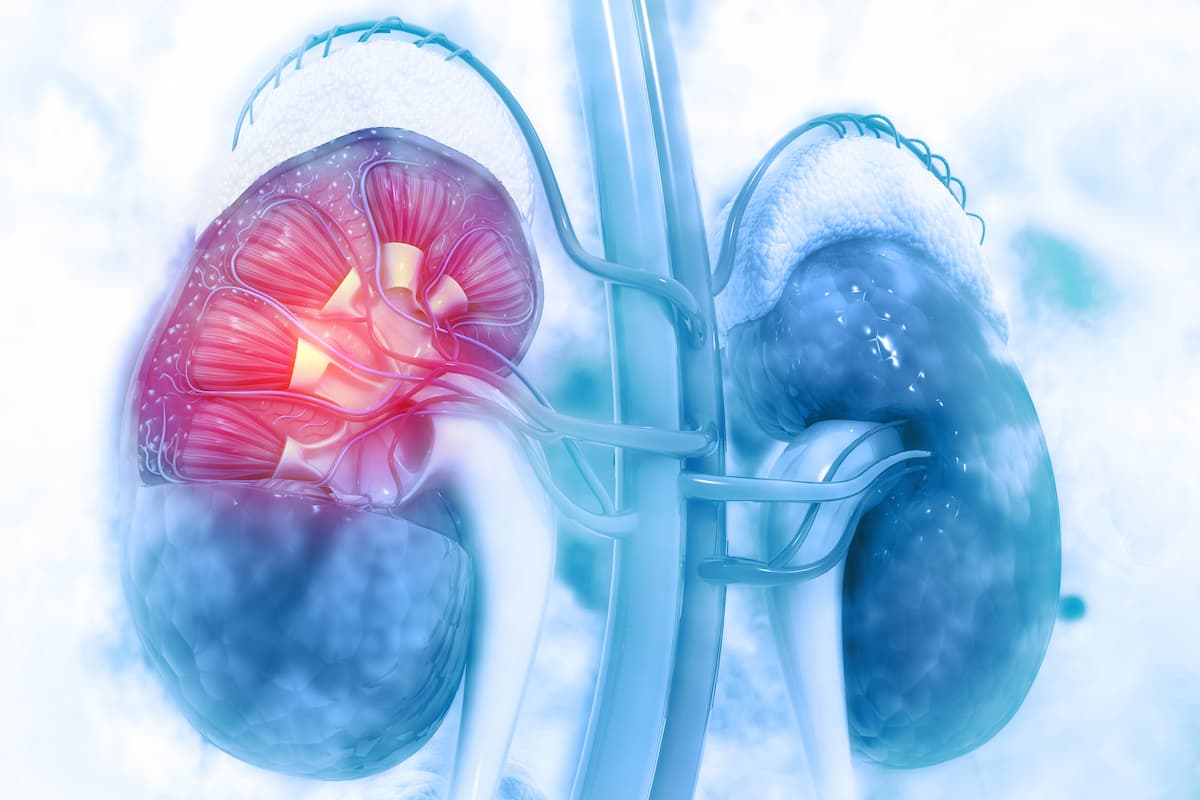FDA Grants Fast Track Designation to Novel Imaging Agent in Clear Cell RCC
A first-in-human phase 1/2 trial is evaluating the theranostic pair of ITM-91 and ITM-94 in patients with solid tumors.
A first-in-human phase 1/2 trial is evaluating the theranostic pair of ITM-91 and ITM-94 in patients with solid tumors.

The FDA has granted fast track designation to [68Ga]Ga-DPI-4452 (ITM-94) to be used as a diagnostic agent for the detection of clear cell renal cell carcinoma (RCC), according to a press release from the developer, ITM Isotope Technologies Munich SE.1
The novel agent forms a theranostic pair with [177Lu]Lu-DPI-4452 (ITM-91), a therapeutic candidate targeting carbonic anhydrase IX in clear cell RCC.
“The FDA’s fast track designation is a validation of ITM-94’s potential to aid in the non-invasive diagnosis of RCC,” Celine Wilke, MD, chief medical officer of ITM, stated in the press release.1 “We have seen promising data in our ongoing clinical trial that suggest ITM-94 could change how clinicians diagnose and stage patients across the broader clear cell RCC disease landscape, with potential utility in supporting clinical decision-making for indeterminate renal masses as well. This news highlights the innovation within our pipeline and the important role an effective diagnostic can play in cancer treatment.”
Currently, ITM-94 is being evaluated in an ongoing, first-in-human phase 1/2 trial (NCT05706129) designed to identify its ability to detect clear cell RCC in patients with indeterminate renal masses compared with CT/MRI imaging. Preliminary data from part A of the trial were published in The Journal of Nuclear Medicine.2
Among 3 patients with clear cell RCC enrolled in the trial, patients 1, 2, and 3 were aged 48, 51, and 54 years, respectively, and the mean administered activities of ITM-94 were 174 MBq, 198 MBq, and 198 MBq. Following administration, high tumor-specific uptake was observed as early as 15 minutes and was sustained for all time points assessed.
Seventeen metastases in bone, lymph nodes, lungs, pancreas, and parotid glands were not readily identifiable by conventional imaging.The low renal parenchymal uptake enabled the identification of renal tumors.
The standardized uptake value (SUV)max at 1 hour after administration was 6.8 to 211.6 (mean, 64.6; SD, 54.8) across 36 lesions. In patients 1, 2, and 3, the highest SUVmax was 109, 106, and 212, respectively, with the highest SUVmean of 39, 62, and 89.
The organs with the highest mean absorbed doses included the small intestine wall (0.3 mGy/MBq; SD, 0.08), stomach wall (0.33 mGy/MBq; SD, 0.10), and gallbladder wall (0.21 mGy/MBq; SD, 0.12); notably, absorbed doses in the kidney, liver, and bone marrow were low. The mean whole-body effective dose was 0.06 mSv/MBq (SD, 0.02).
Additionally, more than 80% of the total administered radioactivity cleared from the bloodstream within 1 hour, with an average percentage of the injected dose found in urine ranging from 6.1 (SD, 3.6) to 13.3 (SD, 4.5) across the intervals of 0 to 1.5 hours and 1.5 to 6 hours.
Regarding safety, no clinically significant toxicity was observed. Treatment-emergent adverse events (TEAEs) were headache (33.3%; n = 1) and increased blood creatine kinase (33.3%; n = 1) and were not causally related to ITM-94. No changes in vital signs, laboratory assessments, or electrocardiograms were significant.
Eligible patients had histologically confirmed unresectable, locally advanced, or metastatic clear cell RCC and had received at least 2 lines of treatment in the metastatic setting, including a tyrosine kinase inhibitor and an immune checkpoint inhibitor.
ITM-94 was administered at 185 MBq (plus or minus 20%) as a slow intravenous injection. Patients also underwent whole-body PET/CT at 15 minutes, 1 hour, 2 hours, and 4 hours after ITM-94 injection.
The primary objective of part A of the trial was to evaluate the safety and tolerability of a single intravenous ITM-94 injection. Secondary objectives were the establishment of optimal imaging procedures for positive lesions, biodistribution assessment, dosimetry, pharmacokinetics, and concordance between ITM-94 and conventional imaging.
Additionally, the trial has several more parts. Part B is assessing increasing doses of ITM-91 in patients with clear cell RCC whose tumors show CAIX expression identified by ITM-94; part C will evaluate the safety and preliminary efficacy of ITM-91 in patients following the recommended dose and treatment schedule obtained in part B; and part D is evaluating the effectiveness of ITM-94 in classifying indeterminate renal masses.
References
- ITM receives U.S. FDA fast track designation for ITM-94 as a diagnostic agent for clear cell renal cell carcinoma. News release. ITM Isotope Technologies Munich SE. November 17, 2025. Accessed November 17, 2025. https://tinyurl.com/3yar58u5
- Hofman MS, Tran B, Feldman DR, et al. First-in-human safety, imaging, and dosimetry of a carbonic anhydrase IX-targeting peptide, [68Ga]Ga-DPI-4452, in patients with clear cell renal cell carcinoma. J Nucl Med. Published online February 22, 2024. doi:10.2967/jnumed.123.267175